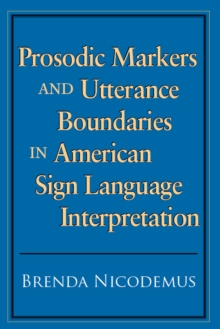
Video Relay Service Interpreters : Intricacies of Sign Language Access PDF
by Brunson Jeremy L. Brunson
Part of the Studies in Interpretation series
Description
“Signed language interpreting is about access,” states author Jeremy L. Brunson at the outset of his new book, and no manifestation of access for deaf people can be considered more complex than video relay services (VRS). In Video Relay Service Interpreters: Intricacies of Sign Language Access, Brunson delineates exactly how complicated the service can be, first by analyzing sign language interpreting as a profession and its relation to both hearing and deaf clients. He describes how sign language interpreters function in Deaf communities and how regulatory processes imposed by VRS providers can constrain communication access based on each individual’s needs.
Brunson proceeds by acclimating readers to the environment of VRS and how the layout of the typical physical plant alters the practice of interpreting. The focus then falls upon intended VRS users, providing insights into their expectations. Interpreters shared their experiences with Brunson in 21 formal interviews and discussions. Many remarked on the differences between face-to-face interpreting and VRS training, which often runs counter to the concept of relating informally with deaf clients as a way to expand access. This thoughtful, sociological study outlines texts that originate between users and interpreters and how they can be used to develop VRS access. Video Relay Service Interpreters concludes with the implications of VRS interpreting for sign language interpreting in general and suggests where scholarship will lead in the future.
Information
-
Download - Immediately Available
- Format:PDF
- Pages:216 pages
- Publisher:Gallaudet University Press
- Publication Date:31/03/2011
- Category:
- ISBN:9781563684845
Information
-
Download - Immediately Available
- Format:PDF
- Pages:216 pages
- Publisher:Gallaudet University Press
- Publication Date:31/03/2011
- Category:
- ISBN:9781563684845










